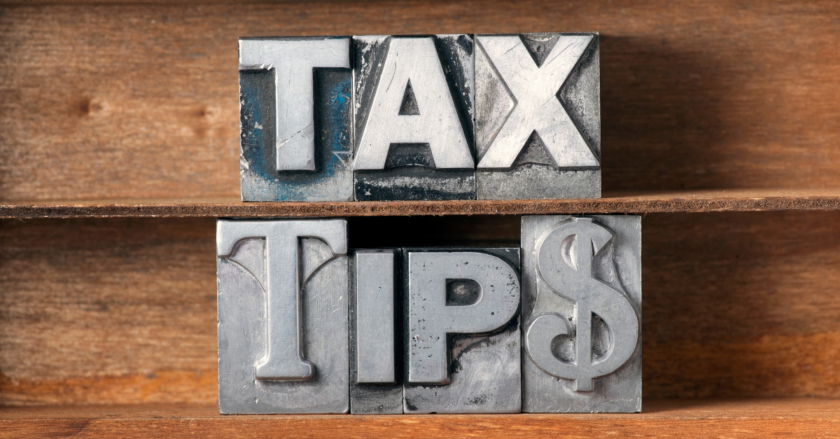Keep in mind the following information is General Advice and is obviously not personalised for your unique needs, objectives or financial situation. Please get in touch with your advisor before taking any action on the below points so they can advise on the appropriateness of this for you.
Hurray! 2021 is finally behind us, for many the last two years have been both a personal and financial rollercoaster to say the least. As we enter the new year of 2022, many of us are sitting here contemplating ways to be smarter and savvier with our tax and finances.
There are several changes being introduced this year, please read on to prepare yourself with the fool-proof 2022 tax artillery. Here’s a summary of what you can expect:
- Introduction of Director ID
- Windfall Gains Tax
- Carried forward personal superannuation contributions threshold
- Downsizer superannuation contributions
- COVID-19 working-from-home personal tax deduction rate extension
- Small business immediate asset write-off threshold
Director ID
The government has introduced new legislation on 14 November 2021 requiring directors of all companies to register for a director identification number (director ID) at Australian Business Registry Services (ABRS).
| Appointment date | Date by which director ID must be held (Corporations Act) |
| Existing directors under the Corporations Act | 30 November 2022 |
| New directors appointed between legislation commencement date and 31 October 2021 | 30 November 2022 |
| New directors appointed from 1 November 2021 and within 12 months of legislation commencement date | Within 28 days of appointment |
| New directors appointed after 12 months of legislation commencement date | Director ID required before appointment *
* The Registrar has the discretion to extend the period within which newly appointed directors have 28 days to apply under section 1272E. |
| New Corporations (Aboriginal and Torres Strait Islander) Act (CATSI) directors appointed between legislation commencement date and 31 October 2022 | 30 November 2023 |
| Existing CATSI directors | 30 November 2023 |
Table: CAANZ. 2022. What you need to know about director ID. Available here https://www.charteredaccountantsanz.com/news-and-analysis/news/be-prepared-for-director-id
To apply for a Director ID, you must set up a myGovID* with an identity strength rating of standard or strong. Additionally, you will need your TFN, and will be asked two questions based on information the ATO knows about you with their all-seeing Tax Eye to confirm your identity.
Unfortunately, accountants are unable to apply for Director IDs on behalf of their clients, although they will be able to assist clients in applying for the Director ID themselves. Speak to your trusty Morrows Biz Tax Advisor today to ensure you are meeting your Director ID obligations!
*If you are unable to obtain a myGovID, applications for Director IDs may also be made over the phone or written, however we recommend myGovID as the easiest way to fulfill Director ID obligations.
Windfall Gains Tax
The Windfall Gains Tax (WGT) is a controversial new tax in Victoria commencing on 1 July 2023. Under the WGT, when there is an uplift in value of land of over $100,000 due to rezoning, a capital gains event will be triggered, with the taxable value of the gain being 62.5% of any uplift above $100,000 and below $500,000, and 50% of the taxable value of uplifts above $500,000.
The WGT is a tax on the owners of the land that is rezoned. There are several exemptions available:
- Land that is capable of being used for residential purposes at the time of rezoning, up to 2 hectares of such residential land, owned by the same owner and all rezoned by the same planning scheme amendment
- In relation to rezonings, to correct obvious or technical errors in the Victoria Planning Provisions or a planning scheme
- If land is owned by a charity and occupied by said charity for 15 years following the rezoning, the WGT is waived
Exemptions: Sro.vic.gov.au. 2022. Windfall gains tax | State Revenue Office. Available at: https://www.sro.vic.gov.au/windfall-gains-tax
If you are assessed as liable for WGT, you will be issued an assessment with a due date for payment. Options to defer the payment are thankfully available, allowing payment of the WGT to be deferred until a dutiable transaction occurs for the relevant land or until 30 years after the rezoning event, whichever occurs first.
Valuation of land before and after a rezoning is conducted by the Valuer-General Victoria. If you disagree with a valuation assessed by the Value-General, an objection may be lodged within two months of receiving the notice of assessment.
If you have any questions or concerns about the Windfall Gains Tax, make sure to speak to your Morrows Tax Business Advisor today.
Carried forward personal superannuation contributions threshold
While it is widely known that individuals are allowed a deductible concessional contribution each financial year to the extent of the deemed cap ($25,000 for the 2018 to 2021 financial years, and $27,500 for the 2022 financial year onwards), we want to shed some much-needed light on the reality that individuals can carry forward unused cap amounts from up to five previous financial years (starting from the 2019 financial year) – subject to the individual’s superannuation balance being less than $500,000 before the start of the financial year in which the unused cap is to be utilised. For 2022 tax returns, this means a best-case scenario deduction of $102,500 – a huge clawback of tax for contributing money to your superfund that you are going to be able to access anyway (eventually).
Irregular income-earners, in particular, will benefit from this, as they can ‘catch up’ on their personal superannuation contributions if they have the financial capacity to do so – for instance, individuals who have received money from a sale and/or incurred a taxable capital gain.
| Financial Year | Financial year Concessional cap
|
Maximum deduction with no concessional cap used in the previous year |
| 2019 | $25,000 | $25,000 |
| 2020 | $25,000 | $50,000 |
| 2021 | $25,000 | $75,000 |
| 2022 | $27,500 | $102,500 |
| 2023 | $27,500 | $130,000 |
Think of it as a particularly longstanding term deposit – with a return on investment at the rate of your marginal tax rate (if you can stand to wait a few years to access the principal). Speaking of waiting, if you want to hit pause on this tax tip, feel free to get utilising any time over the next few years. Something to note though is you’ll only ever have the previous five financial years of unused cap available to you. In any case, a lot of the big player superfunds require a stifling three- or four-weeks’ notice if you’re to get your contribution in and processed before 30 June 2022 cut-off – so make sure you get your contribution in and processed early.
Something to watch out for before you start daydreaming about how you’re going to spend all that sweet tax refund money – your concessional cap is eaten away by employer contributions (whether it be the compulsory 10% SGC or otherwise) as well as personal contributions.
Downsizer superannuation contributions
If you are 65+ and meet the eligibility requirements* (see below for an excerpt of the ATO website) you can make a contribution to your superfund from the proceeds of selling your home of up to $300,000, without eating up your contributions cap or superannuation balance (and even if you have a total super balance greater than $1.6m). It’s a great opportunity to top up what you’ve saved in super if you haven’t had the chance (or if you’ve just been devoted to traversing Europe), and there’s no requirement to buy a new home if you’re planning on moving into your firstborn’s granny flat for some well-deserved pay-back free rent.
A couple of important factors to take into consideration:
- It will count towards your transfer balance cap
- You can only make the downsizer contribution once
- The contributions are non-deductible
An added bonus is that if the home that was sold was only owned by one spouse, the non-ownership spouse can also make a downsizer contribution (provided the other eligibility criteria* are met- see below for the list of criteria). All’s fair in love and real estate!
Additionally, there is a proposed change for downsizer superannuation contributions that will reduce the age requirement to 60+ instead of 65+. Speak to your trusted Morrows superannuation advisor today to learn more about the carried forward personal superannuation contributions threshold and the downsizer superannuation contributions scheme, and make sure you don’t miss out!
COVID-19 working-from-home personal tax deduction rate extension
Long ago (April 2020) in a galaxy not so far, far away, the ATO announced they would be introducing a temporary, 80c per hour worked from home tax deduction for the period 1 March 2020 to 30 June 2020 requiring minimal substantiation. This method was extended to 30 June 2021, and has now been additionally extended for another year until 30 June 2022. Workers should continue to keep a record of the hours they work from home (through timesheets, rosters, diaries or similar) to ensure they have appropriate substantiation for their home office hours claim.
Hot tip – as the shortcut method covers all eligible home office expenses this means you cannot claim usual expenses such as mobile phone or internet costs concurrently. If you feel the 80c per hour does not accurately represent the costs of your home office you can continue to use the old method and claim 52c per hour, whilst still being able to claim other applicable home office expenses – rest assured your trusted Morrows advisor will investigate all options to maximise your deduction.
Another unfortunate drawback is that despite caffeine being as necessary as a computer for many, the ATO has deemed coffee, tea and snacks consumed while working from home ineligible as office expenses. R.I.P. to the daily $5 spent on a coffee down the street.
Small business immediate asset write-off threshold
Small business owners can continue to rejoice as we have a whole 5 months to continue writing off eligible assets in full. Up to 30 June 2022, businesses with an aggregated turnover of up to $5 billion can claim an immediate deduction for the value of:
- New depreciating assets;
- The cost of improvements to existing eligible assets; and
- For small and medium-sized businesses (aggregated annual turnover of less than $50 million) – second-hand assets
Assets must be installed and ready for use by 30 June 2022 – so get your shopping in soon. As well as a tax deduction, combined with the new loss carry back rules a high-cost asset purchase could tip your business into loss territory which could then be carried back to prior year profits – so a refund of tax already paid could be on the cards as well.
Before you hit up the Lamborghini dealers, remember that the luxury car limit is $60,733 for the 2022 financial year, meaning only the business portion of this amount can be immediately deducted in the year of purchase.
Any questions? Reach out to your Morrows advisor
Ensuring your tax obligations are compliant with relevant taxation requirements and are effectively managed is the best way to give you the peace of mind. Keeping abreast of all the changes can often be a challenge. Our Morrows advisors are here to help you navigate through these complexities and give you the confidence that your finances are being well taken care of. Please contact us to learn more.
*Eligibility for the downsizer measure
You will be eligible to make a downsizer contribution to super if you can answer yes to all the following:
- you are 65 years old or older at the time you make a downsizer contribution (there is no maximum age limit)
- the amount you are contributing is from the proceeds of selling your home where the contract of sale exchanged on or after 1 July 2018
- your home was owned by you or your spouse for 10 years or more prior to the sale – the ownership period is generally calculated from the date of settlement of purchase to the date of settlement of sale
- your home is in Australia and is not a caravan, houseboat or other mobile homes
- the proceeds (capital gain or loss) from the sale of the home are either exempt or partially exempt from capital gains tax (CGT) under the main residence exemption, or would be entitled to such an exemption if the home was a CGT rather than a pre-CGT (acquired before 20 September 1985) asset
- you have provided your super fund with the Downsizer contribution into super form either before or at the time of making your downsizer contribution
- you make your downsizer contribution within 90 days of receiving the proceeds of sale, which is usually at the date of settlement
- you have not previously made a downsizer contribution to your super from the sale of another home.





